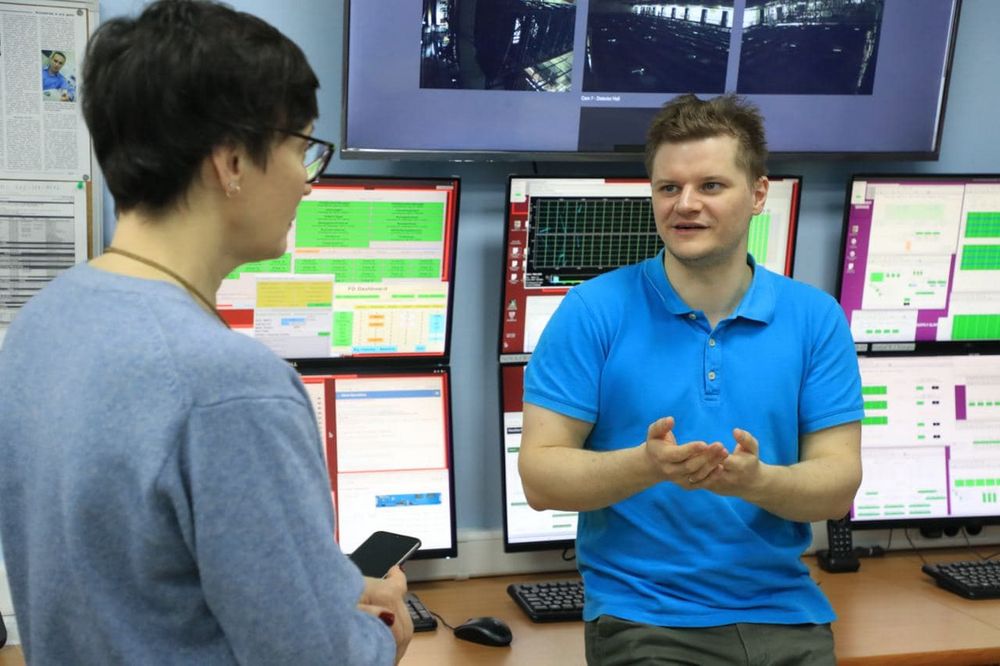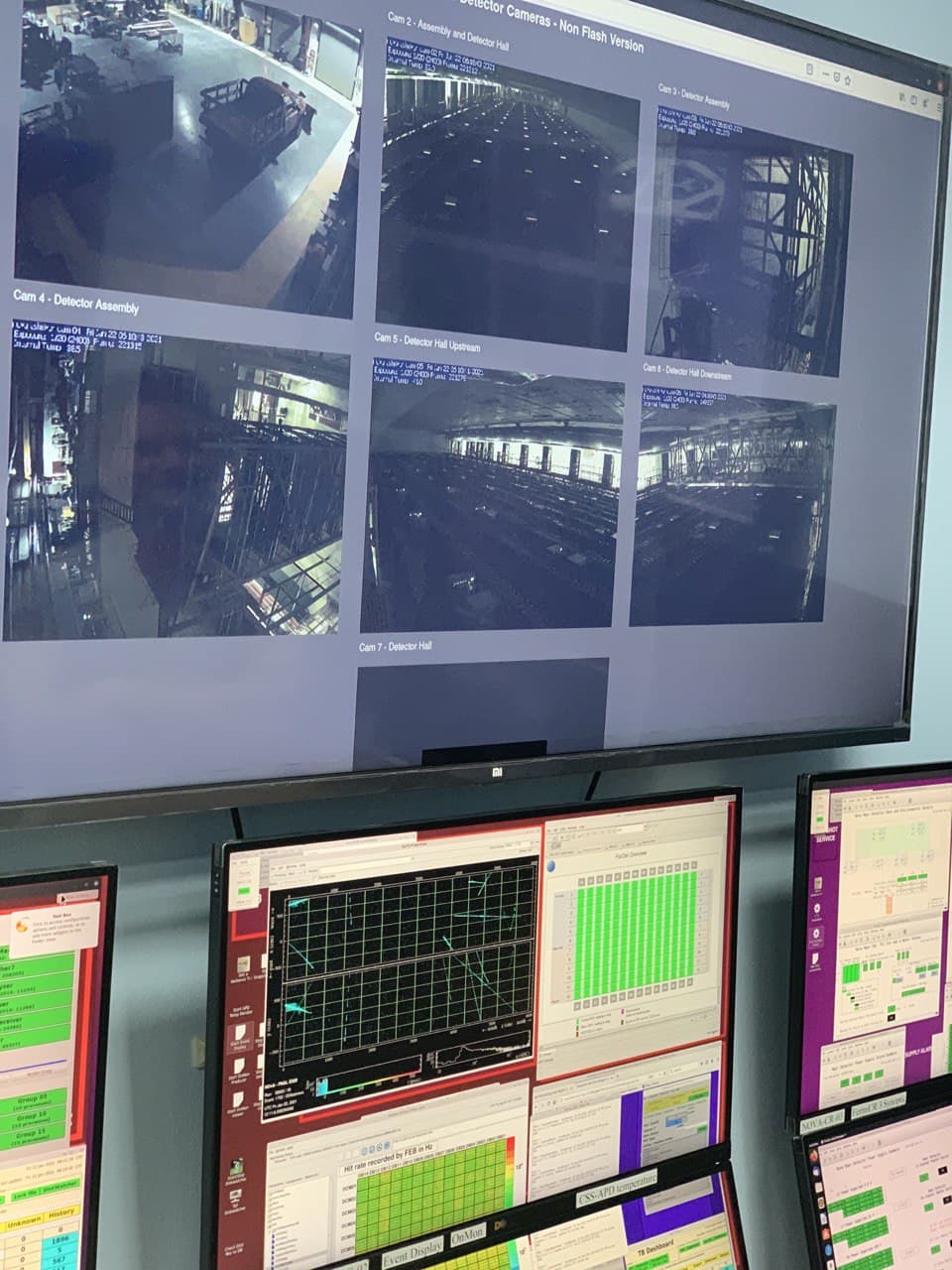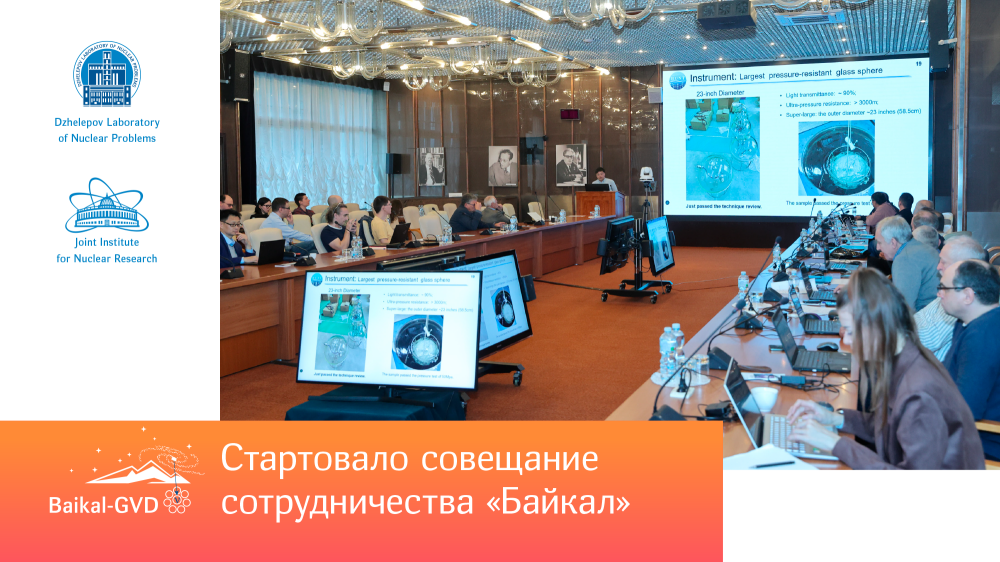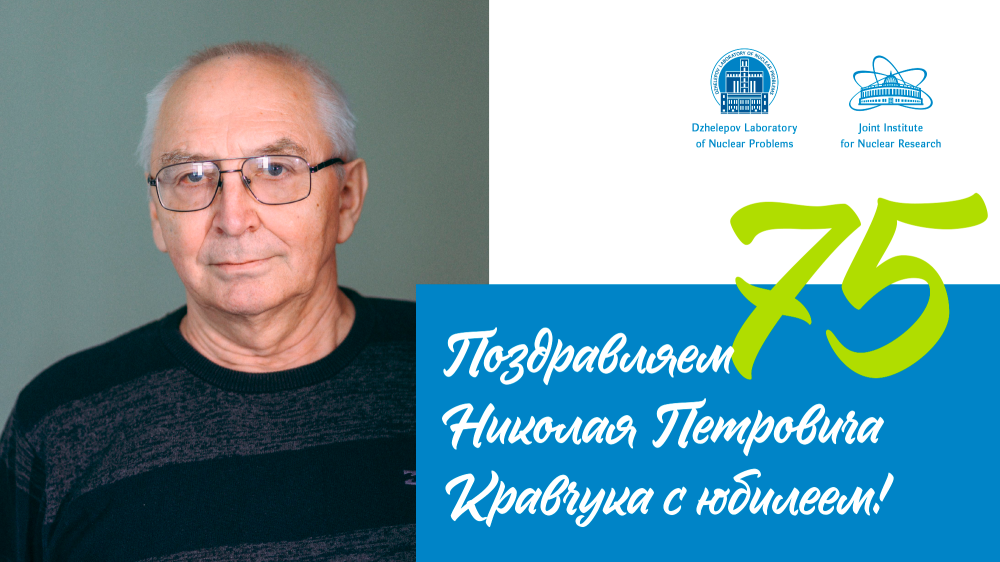In Lockdown 4: Chronicles and Comments
The DLNP Group of Scientific Communication visited the Remote Operation Center (ROC-Dubna) of NOvA, a long-baseline neutrino experiment studying neutrino oscillations when a shaped particle beam is sent to the Far Detector located 810 km away from the source.


Alexander Antoshkin, the Head of the Center, explains, “The main facilities of the experiment are an accelerator and the Near Detector located at Fermilab (USA), and also the Far Detector located in Minnesota. The primary accelerator beam largely comprises muon neutrinos. Then, while travelling, part of muon neutrinos oscillates into electron and tau neutrinos. The Near and Far Detectors record neutrino beam composition and collect statistics which demonstrate how many muon neutrinos kept their type and how many of them oscillated into electron or tau neutrinos.”
Neutrinos interact with matter so weakly that there was no necessity of building a tunnel for the beam coming from the Near to the Far Detector—particles travel directly through the Earth. A key feature of these detectors is that they are highly segmented. They are composed of cell strips filled with liquid scintillator and assembled in blocks in different planes along the beam axis. This allows not only detecting the interaction of neutrinos and other particles with detector material but also determining the direction particles come from.

Data acquisition in the experiment should be under control every minute round the clock. For this reason, supervision shifts are shared between collaboration members. At first, the experiment was supervised only from Fermilab. Then, it became obvious that remote operation centres could also be established.
Five years ago, ROC-Dubna became the first centre beyond the USA boundaries, and from that time on, it successfully controls the operation of the experiment. Furthermore, the Dubna team is involved into detector data processing and analysis, and also advances instrumentation of the experiment.
The main research objective is a more precise measurement of neutrino oscillation parameters. However, the experiment will also have an important practical use.

Alexander Antoshkin says, “One of practical outcomes of advancement in neutrino physics will be the opportunity for examining the interior of our planet—neutrinos can easily permeate through the Earth. And not only this. For instance, one can monitor cores of nuclear reactors in order to determine plutonium production or study distant celestial bodies.”
It only remains to add that remote operation centres did not stop controlling the experiment during the COVID-19 pandemic, shifts proceeded according to the schedule, and experimental data processing went on.






